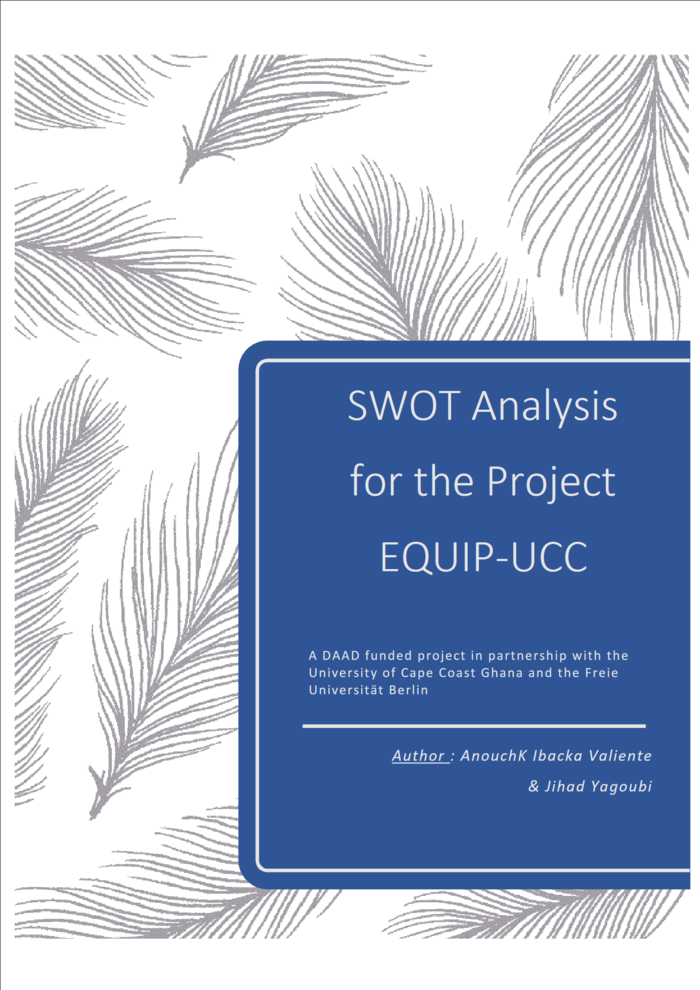SWOT Analysis
EQUIP: SWOT Analysis
Many authors point out that even though student enrollment numbers in Higher Education Institutions (HEIs) have significantly increased, structural inequalities of gender, but also age and socio-economic status still persist in Ghana (Higgins 2009; Mama 2003; Manuh et al. 2007; Morely et al. 2009) as much as in many other countries around the world. Adusah-
Karikari explains that “(t)he majority of respondents cited conflicts in managing their multiple roles as mothers, wives and workers, interrupted careers, impact of family dynamics, lack of mentoring and networks, and the power of the “old boys” network as key issues.” (Adusah-Karikari, 2008, p. 5). Highlighting these challenges stresses out the importance of looking into the structural, institutional, societal, and individual factors that hinder access to equal opportunity at the university, in order to limit them and formulate adapted policies that can reduce disparities.
Although academic and political debates about the necessity and effectiveness of affirmative action policies are vehement, such strategies have shown results at least partially and if accompanied by complementary measures. According to Mama (2003), in the university context, affirmative action strategies that promote women’s access to HEIs that have been properly designed and implemented have shown positive outcomes. An example of such policies in Ghana is the national education affirmative action programs and the quota system that promote access to university for students of least privileged backgrounds (Adu-Yeboah 2011; Mama 2003). In Uganda, Makerere University allocated an additional 1.5 points to eligible women in order to promote their accession to public institutions. This initiative increased women’s enrolment by 13 percentage points, going from 20% to 33% enrollment rates. However, since this initiative only applied to students and not to staff or faculty members, women’s employment did not increase (Kwesiga, 2002).
When it comes to equity strategies for employment, the results are harder to show for. In Ghana, despite the governmental efforts, policy initiatives towards equity did not contribute to increasing women’s representation in HEIs (Mabokela & Mlambo, 2015). However, implementing gender-blind policy changes remains disadvantageous to women, as it was the case in new promotion policies in Ghanaian universities, where such policies were developed from the top-down, i.e. by male constituencies, and therefore did not take women’s needs into consideration and rather excluded them (Mabokela & Mlambo, 2015). Finding out the structural and institutional tenets of equal opportunity, through the introduction of Gender Equality Officers at UCC, is the main goal of the SWOT analysis for the EQUIP project led by the CEGRAD at the University of Cape Coast (UCC) and in partnership with the Frei University of Berlin (FUB). The end goal of the project is to formulate an Action Plan adapted to the reality of UCC that will work in the direction of promoting equal opportunities within the university structure.
Click here to read the full results of the SWOT Analysis.
EQUIP is funded by the program DIES-Partnerships with Higher Education Institutions in Developing Countries by the German Federal Ministry for Economic Cooperation and Development (BMZ) and the German Academic Exchange Service (DAAD). 


